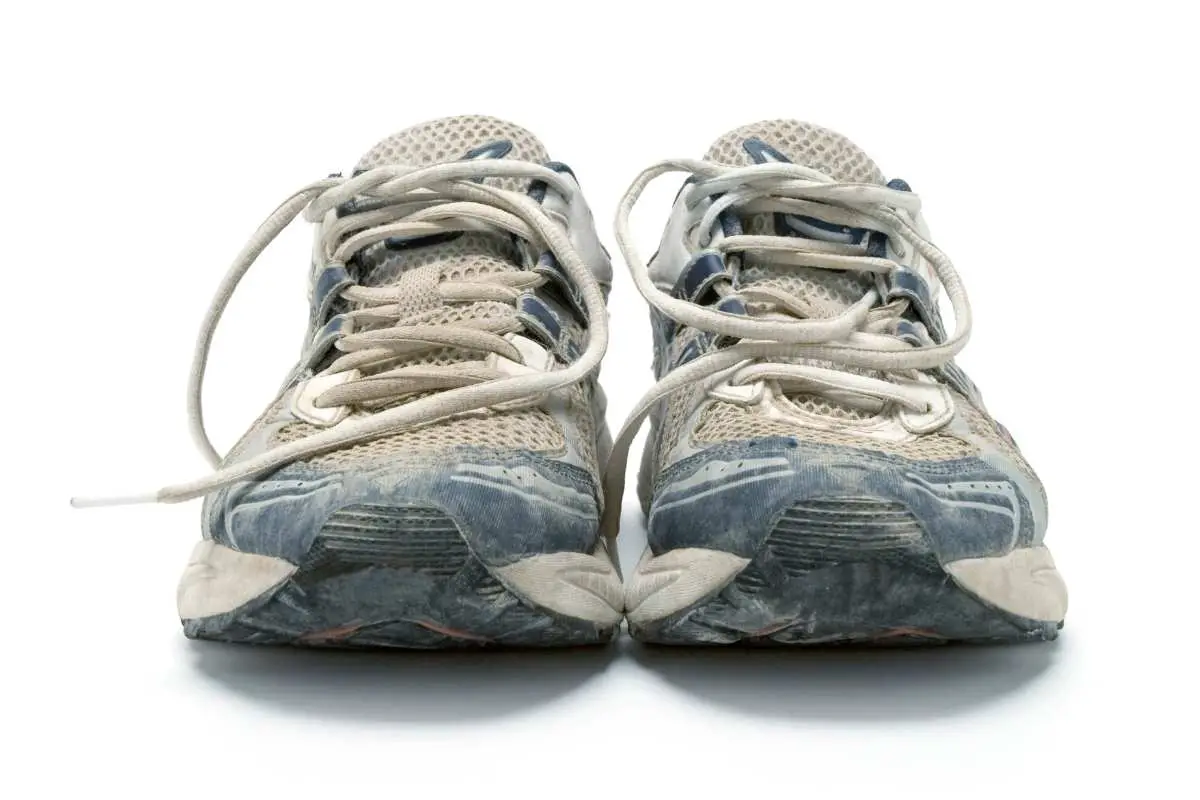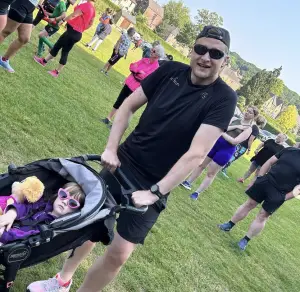Over time, you notice how your running shoes make your legs feel stiff after a running session. You bought running shoes with a comfortable amount of cushioning, but you may wonder if the shoes lost their cushioning over time. After all, the shoes feel less comfortable than when you first bought them. Do running shoes lose cushioning?
The cushioning in running shoes compresses with each step, and it bounces back less with each movement forward. While most cushioning will last for 300 to 500 miles, all cushioning will eventually wear out and require replacement. Buying a new pair of running shoes makes sense at that point.
Now, if you’d like to learn more about how to get the most out of the cushioning in your running shoes, keep reading as I explore this topic in depth. Alternatively, you may be interested to start with my other article where I look if running shoes should be tight or loose.
How to Make Your Running Shoes Last Longer
Some runners will rotate between a couple of pairs of running shoes to give the cushioning time to bounce back. Giving your running shoes a breath between days can help them to last longer and a subtle change of shoes will strengthen the small muscles in your feet and legs.
You may want to remove the cushioning after a rainstorm or if you sweat a lot. Wet shoes can damage the midsole or cushion, but it can make your running shoes wear out sooner. Dry out the midsole on its own and stuff used newspapers into the shoes to absorb the moisture.
Don’t leave your running shoes out in the sunlight to bake since the UV rays can discolor the fabric and cause the leather to shrink. The materials will degrade faster.
To figure out which shoes last the longest requires some attention on your part. You might track the miles on each pair of running shoes to determine how long each brand lasts with a running log. You can also download apps that will track this information for you. MapMyRun can track your shoes to tell you when to replace them and to see how long they last.
To make your midsole last longer, only use your running shoes for running. Don’t use them for casual everyday activities since this will contribute to wear and tear.
Signs to Replace Your Running Shoes
Learning when to replace your old pair of shoes becomes a bit of an art form, but you could use the app mentioned before as an indicator. Jogging in worn-out running shoes can cause an injury since the cushioning provides protection. As your shoes lose shock absorption and stability, they will not only feel more uncomfortable, but they can lead to an injury.
Let’s look at the signs to replace a pair of running shoes:
- Ran 300 to 500 miles
- Pain when running
- Treads come apart
- Uneven wear
- Holes appear
- Cushioning stops springing back
- Rips, creases and folds on the cushion
One thing that I haven’t mentioned yet is how heavier or taller runners may need to replace their shoes more often since the extra weight or height will compress the cushioning more. You may even want to replace your shoes every 300 miles if larger since it protects you from an injury. Lighter runners can go more to the 500-mile mark if the shoe still feels comfortable. Rugged terrain can wear down the cushioning of your shoe sooner as well, so you may want to buy trail running shoes for that purpose.
Unfortunately, many runners will wear their running shoes past their prime, and I would recommend that you avoid it as much as possible. An injury can set you back in your running progress.
Are Running Shoes Supposed to Be Cushioned?
Every runner will have their own preference on the amount of cushioning. Some prefer the highly cushioned HOKA shoes, but other runners prefer the barely cushioned shoes like zero-drop running shoes, such as Xero Shoes. Researchers have conducted studies where they found how the highly cushioned shoes could cause leg stiffness and greater impact on the pavement—the opposite of their intended purpose. I’ll leave that for you to decide since shoes HOKA have wild popularity among some runners.
What if I Don’t Wear My Running Shoes?
You will want to use your running shoes after six months to a year since they can start to break down after this point. While they may not prove unusable, you won’t see the same cushioning in the midsole as a new pair of shoes. The shoes and the materials start to degrade even without use after the six-month to the one-year mark. For that reason, it makes little sense to buy a pair of shoes in advance since it will degrade the quality of the shoes.
Many times, shoes that weren’t worn right away may not even last for the full 300 to 500-mile mark. In some cases, they won’t last as long because it depends on the brand. However, most reputable manufacturers will see running shoes last for that length of time. Some runners like specific running shoes even though they don’t make it to the 300-mile mark.
Trail Running Shoes vs Road Running Shoes: Which Lasts Longer?
Trail running shoes usually last longer than road running shoes, but it depends on the brand and how you use them. An expert tip here: Don’t use trail running shoes for road running since the sole of the shoe will break down faster. While the trail running shoe’s sole was designed for better durability and cushioning, keeping your feet dry and giving good traction, it rubs off quickly on concrete over time. It won’t hold up to the abuses of the concrete.
It won’t impact your cushioning, but your shoe will fall apart sooner. The sole is much softer on a trail running shoe, and it wasn’t meant to pound the hard pavement. For that reason, you may want to avoid using it for casual everyday footwear. You could do this, but you will need to replace them sooner. Since trail running shoes tend to cost more than road running shoes, it makes little sense.
Do running shoes break down over time?
Most running shoes will start to grow more uncomfortable and fall apart after 300 to 500 miles of running (This may be different for carbon plate running shoes). This depends on a variety of factors like the shoe brand, runner’s weight, runner’s height and how they’re used. Running shoes should be replaced after they start to feel uncomfortable.
How do I know if my running shoes are worn out?
You may see signs of wear and tear such as creases in the base, treads that fall apart, discomfort when running, cushioning that stops springing back and having put 300 to 500 miles into the shoes. All of this indicates that you may want to switch out your shoes and over to a new pair.
Final Thoughts
Your running shoes will lose cushioning over time since the feet will compress the midsole. After a while, it bounces back less and less—usually after about four to six months. You will know it because the shoe starts to feel less and less comfortable during your running sessions. The most obvious sign that you need to replace an old pair of running shoes is when you see the tread wearing out. The tread may become smooth, or it may change the overall shape of the sole.
If you’ve worn out your running shoes and need a new pair, I would recommend the New Balance 990 V5 Sneaker for men and the 1080 V11 Running Shoe for women.


